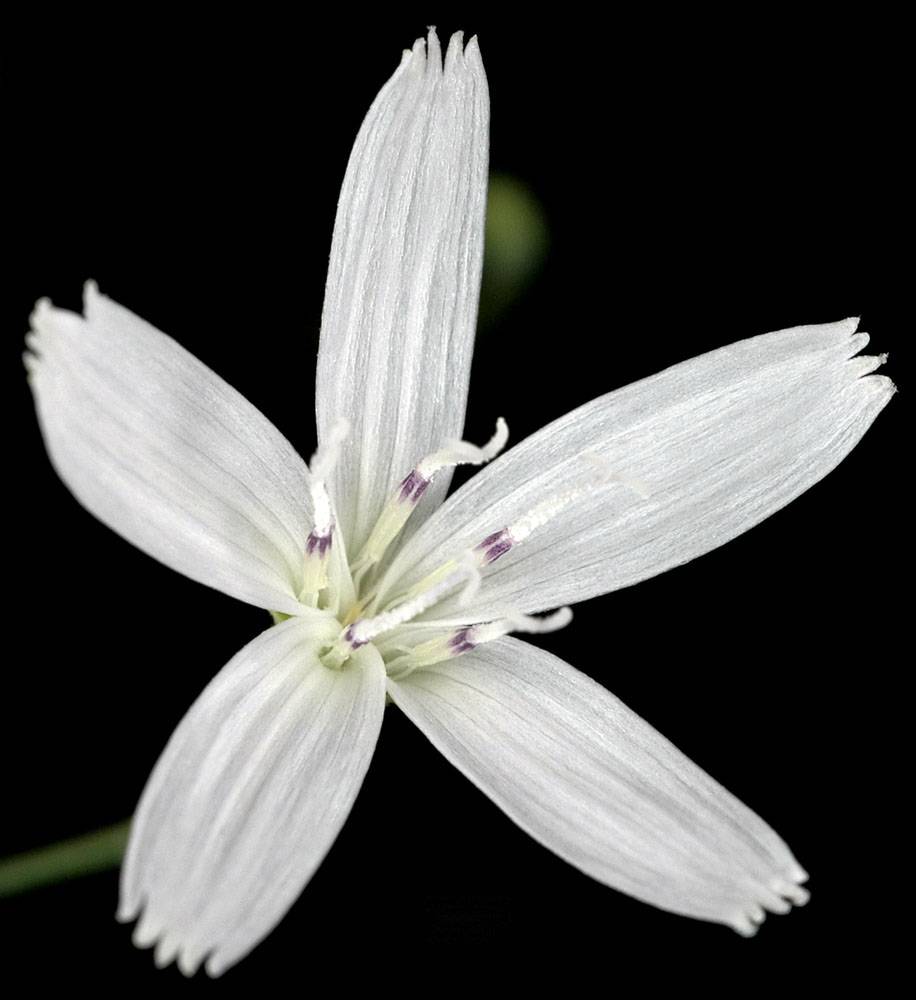
Plants annual, 10–60 cm.
Stems glabrous.
Leaves basal and cauline; basal usually withering by flowering, 5–7 cm, oblanceolate, margins entire to irregularly lobed, surfaces glabrous; cauline much reduced, bract-like.
Inflorescences panicle- or raceme-like arrays.
Peduncles 3–15 mm.
Involucres cylindrical, 8–9.5 mm, surfaces glabrous.
Phyllaries inner 5–6, linear-lanceolate; outer mostly basal, deltate, loosely reflexed.
Florets 5–6; ligules 8–9.5 mm, light to dark pink.
Fruits 3.3–3.8 mm, tan or light brown, grooved and roughened between ribs; pappus bristles 9–12(15), light tan, plumose on distal 50–60%, persistent or distal portion deciduous.
2n=16.
Sagebrush scrub. Flowering Jul–Aug. 1300–1400 m. BR. Native. Endemic to Oregon.
Stephanomeria malheurensis is a recently evolved species derived from S. exigua, with which it coexists at its only known location in Harney County. It is morphologically distinct from the parent species, differing in fruit size, floret number, and ligule length. Additionally, S. malheurensis is self-compatible and sets viable fruits without insect pollination, whereas S. exigua requires cross-pollination for successful fruit production.
as described under Stephanomeria malheurensis
Annuals, 10-60 cm. Stems single, branches ascending, glabrous. Leaves withered at flowering; basal blades oblanceolate to spatulate, 5-7 cm, margins entire to pinnately lobed (faces glabrous); cauline much reduced, bractlike. Heads borne singly along branches. Peduncles 5-10 mm (glabrous). Calyculi of appressed bractlets. Involucres 8-9.5 mm. Florets 5-6 (ligules usually pink, rarely white or orange-yellow). Cypselae tan to light brown, 3.3-3.8 mm, faces moderately tuberculate, grooved; pappi of 9-12(-15), light tan bristles (connate in groups of 2-4, bristles and/or bases persistent), plumose on distal 50-60%. 2n = 16.Flowering Jul-Aug. Soils derived from volcanic tuff, high desert. of conservation concern; 1600 m; Oreg.Stephanomeria malheurensis has been examined in a series of studies (L. D. Gottlieb 1973b, 1977, 1978b, 1979, 1991; Gottlieb and J. P. Bennett 1983; S. Brauner and Gottlieb 1987, 1989; B. A. Bohm and Gottlieb 1989) because it is one of the very few examples of the recent, natural origin of a diploid, annual plant species. At the type locality, it grows with a population of S. exigua subsp. coronaria that is thought to be its progenitor.Stephanomeria malheurensis is known from a single locality in Harney County, Oregon, growing in soil derived from volcanic tuff in the high desert of eastern Oregon. It is a federally listed rare and endangered species, and is in the Center for Plant Conservation´s National Collection of Endangered Plants.